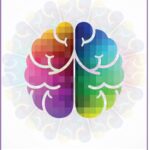 by Jae Lee, DO; Laura Arcand; Puneet Narang, MD; and Steven Lippmann, MD
by Jae Lee, DO; Laura Arcand; Puneet Narang, MD; and Steven Lippmann, MD
Dr. Lee is Resident Physician, Hennepin-Regions Psychiatry Program, Minneapolis-St. Paul, Minneapolis; Ms. Arcand is physician assistant student, Augsburg College, Minneapolis, Minneapolis; Dr. Narang is Staff Physician, ECT Psychiatrist, Regions Hospital, Minneapolis-St. Paul, Minnesota; and Dr. Lippmann is Professor of Psychiatry, University of Louisville School of Medicine, Louisville, Kentucky.
Innov Clin Neurosci. 2014;11(11–12):27–29
Funding: No funding was provided for this article.
Financial disclosures: The authors have no conflicts of interest relevant to the content of this article.
Key words: Electroconvulsive therapy, ECT, ECT-induced mania, mania, manic, bipolar I
Abstract: Electroconvulsive therapy can induce mania. A recent change in the Diagnostic and Statistical Manuel of Mental Disorders, Fifth Edition classifies electroconvulsive therapy-induced manic episodes as a bipolar type I diagnosis. There are no current established guidelines to treat such condition. The following clinical vignette describes a vignette in which a manic episode occurred following electroconvulsive therapy treatment. This case report examines the potential benefit of prescribing mood stabilizers during the acute episode and for maintenance care.
Introduction
Electroconvulsive therapy (ECT) is an effective and safe treatment for mania.[1] However, there are several articles that document induced mania due to ECT.[2–5] The incidence of ECT-induced mania may be as high as 24 percent.[6] ECT should be discontinued if mania occurs, but there are no established guidelines for treating ECT-induced mania.[6] This issue is especially relevant with the change in the Diagnostic and Statistical Manuel of Mental Disorders, Fifth Edition (DSM-5) criteria, which now classifies ECT-induced mania as meeting criteria for a manic episode and therefore is categorized as a bipolar I diagnosis.[7]
Clinical Vignette
A 55-year-old man with major depressive disorder (MDD) presented to a crisis center for evaluation of worsening depression. He had made a suicide attempt nine days before that when he reportedly ingested 150 “Sleep 2” pills. This resulted in a coma lasting one week. Upon awakening he was upset about still being alive.
He was hospitalized due to his reports that prior to admission he was spending the majority of his time in bed, experiencing no joy in activities or interest in hobbies. The patient stated overt suicidal intent and felt guilty about a divorce two years ago. He complained about poor concentration and reported a 40 pound weight loss over the past month. There were no symptoms of mania or hypomania on admission. The mental status examination evidenced a disheveled appearance, psychomotor retardation, and slowed speech, with a depressed affect, but without psychotic ideation. Sertraline, 100mg daily, had been prescribed prior to admission. The physical examination, laboratory test results, and a head computerized tomogram (CT) were unremarkable.
His past psychiatric history reveals recurrent major depression, diagnosed 15 years ago. He had no bipolar history. There was one other suicide attempt two years before this one. An alcohol use disorder was in remission for 15 years. The patient was twice divorced and lived alone. For the past two decades, he worked as warehouse manager, but had not been going to work for the past two months. There were no known psychiatric conditions in his family.
During the initial hospital course, sertraline was discontinued and replaced by citalopram 20mg a day and mirtazapine 30mg nightly. Depressive symptoms did not improve in a week, thus ECT was recommended since he was suicidal and his symptoms had not diminished. After three ECT treatments, the patient experienced improved affect and appetite. He tolerated the first two treatments without complications, but evidenced acute confusion briefly, immediately following each treatment.
After the third ECT session, the patient developed manic symptoms, being sexually disinhibited and required seclusion. Increased energy, decreased sleep, talkativeness, irritability, and agitation were noted. Symptoms became progressively worse over several days. As a result, ECT and antidepressant medications were discontinued. Quetiapine was initiated for mood stabilization and all inappropriate behaviors subsided; however, the patient became depressed again. Sertraline was restarted since it was considered to be unrelated to the mania, being an unremarkable ongoing pharmacotherapy, not used just prior to the development of the mania. Depressive symptoms gradually improved over the next week and he became more socially active. ECT was not restarted since it appeared to induce mania. He sustained good progress and was discharged on the same pharmacotherapy to clinic follow-up.
Discussion
The literature reports vary as to the incidence of ECT-induced mania or hypomania.3,6 One study of 32 depressed subjects recorded a 12.5-percent switch to hypomania following ECT.[3] Another report examining 100 inpatients with ECT-treated bipolar depression, resulted in a 25-percent switch to mania or hypomania.[6] Documented mania or hypomania associated with ECT in people with unipolar, bipolar, and schizoaffective disorders was not discovered. Thus, the occurrence of mania following ECT might not be solely due to the natural cycling of the underlying illness.[4]
Our patient exhibited manic symptoms following ECT. Therefore, according to the new DSM-5, this would be classified as a bipolar I diagnosis.[7] It remains unclear as to whether this subset of population should be treated with mood stabilizers.
Lithium has been reported to help in such instances.[8,10] In one patient with an ECT-treated depressed bipolar disorder, manic symptoms appeared after ECT treatment; lithium was prescribed while ECT was resumed. The patient became euthymic after four additional ECT administrations.[8] There are recommendations that preclude lithium use during ECT; yet there are also indications of it being effective and safe.[9,10] There is a cited case of a patient who had over 70 outpatient maintenance ECT, concurrent with lithium, without any signs of confusion.[10] In 12 subjects receiving ECT while taking lithium, no complications occurred.[11]
Antipsychotic drugs are also utilized in depressed patients who do not respond well to ECT.10 In a retrospective study of ECT during neuroleptic administrations, no adverse effects were documented.[12] In addition, individuals with mood and psychotic disorders improved in Clinical Global Impression scale scores, especially while prescribed second generation agents.[12] A review about interactions of antipsychotic medicines during ECT treatment concluded that this combination is well tolerated and may provide additive therapeutic benefit.[13]
Although ECT appeared to have been the etiology of mania in this case, it is not firmly established as the only possible cause. Illness-related and/or drug-induced mania cannot be ruled out.
One limitation of our case study is that we did not use rating scales or structured interviews. It may have been helpful to use rating scales between each ECT treatments.
Conclusion
There are numerous reports of increased risk for mania or hypomania following ECT treatment.[2–5] However, there are no established management guidelines. Our clinical vignette recounts a case in which a patient, who did not have a past history of bipolar disorder, developed mania shortly following three ECT treatments. Improvement followed, once ECT and antidepressant drugs were discontinued. Quetiapine was successfully prescribed to treat the excitability.
Since ECT-induced manic episodes are classified as bipolar I according to DSM-5, there is question of whether such patients should be treated with mood stabilizing agents acutely or in maintenance therapy. Although lithium has been reported to be associated with cognitive disturbances and prolonged seizures, there are reports demonstrating safety in ECT and lithium combination therapies.[9–11] Since there is a chance of relapse following ECT in patients with bipolar disorders, lithium may be an agent to consider for maintenance therapy. In one case report that discusses lithium-prevention of a manic switch during ECT, lithium appeared to have prevented further manic episodes during continued maintenance ECT treatments.[8] Thus, in that vignette, lithium was helpful in allowing ECT to continue. Mood stabilizer drugs might be considered for stabilizing patients that require further ECT.
In addition to lithium, antipsychotic medications may be utilized in the treatment of ECT-induced mania. Atypical antipsychotic drugs have effectiveness when combined with ECT treatment for patients who do not respond to ECT alone;[12] however, there are no formal studies for substantiation. These pharmaceuticals, if indicated, are also prescribed independent of ECT to treat both affective and/or psychotic conditions. As documented in this report, second generation antipsychotic agents may be selected during ECT if indicated by manic or psychotic symptoms. As demonstrated in our vignette, a manic episode that followed ECT treatment may not necessarily resolve with discontinuation of ECT. Mood stabilizing agents may be needed in the short and even longer time periods. The safety and effectiveness of valproic acid, lamotrigine, gabapentin, and topiramate for this indication has not been substantiated.[13]
References
1. Mukherjee S, Sackeim H, Schnur D. Electroconvulsive therapy of acute manic episodes: a review of 50 years’ experience. Am J Psychiatry. 1994;151:169–176.
2. Andrade C, Gangadhar B, Swaminath G, Channabasavanna S. Mania as a side effect of electroconvulsive therapy. Convuls Ther. 1988;4:81–83.
3. Angst J, Angst K, Baruffol I, Meinherz-Surbeck R. ECT-induced and drug-induced hypomania. Convul Ther. 1992;8:179–185.
4. Lewis D, Nasrallah H. Mania associated with electroconvulsive therapy. J Clin Psychiatry. 1986;47:366–367.
5. Devanand D, Sackeim H, Decina P, Prudic J. The development of mania and organic euphoria during ECT. J Clin Psychiatry. 1988;49:69–71.
6. Bost-Baxter E, Reti I, Payne J. ECT in bipolar disorder: incidence of switch from depression to hypomania or mania. J Depress Anxiety. 2012;1:1–4.
7. American Psychiatric Association. Diagnostic and Statistical Manual of Mental Disorders, Fifth Edition. Arlington, VA: American Psychiatric Press Inc.; 2013.
8. Dequardo J, Tandon R. Concurrent lithium therapy prevents ECT-induced switch to mania. J Clin Psychiatry. 1988;49:167–168.
9. Lippmann S, El-Mallakh R. Can electroconvulsive therapy be given during lithium treatment. Lithium. 1994;5:205–209.
10. Lippmann S, Tao C. Electroconvulsive therapy and lithium: safe and effective treatment. Convuls Ther. 1993;9:54–57.
11. Dolenc T, Rasmussen K. The safety of electroconvulsive therapy and lithium in combination. J ECT. 2005;21:165–170.
12. Nothdurfter C, Eser D, Shule C, et al. The influence of concomitant neuroleptic medication on safety, tolerability and clinical effectiveness of electroconvulsive therapy. World J Biologic Psychiatry. 2006;7:162–170.
13. Naguib M, Koorn R. Interactions between psychotropics, anesthetics, and electroconvulsive therapy. CNS Drugs. 2002;16:229–247.





